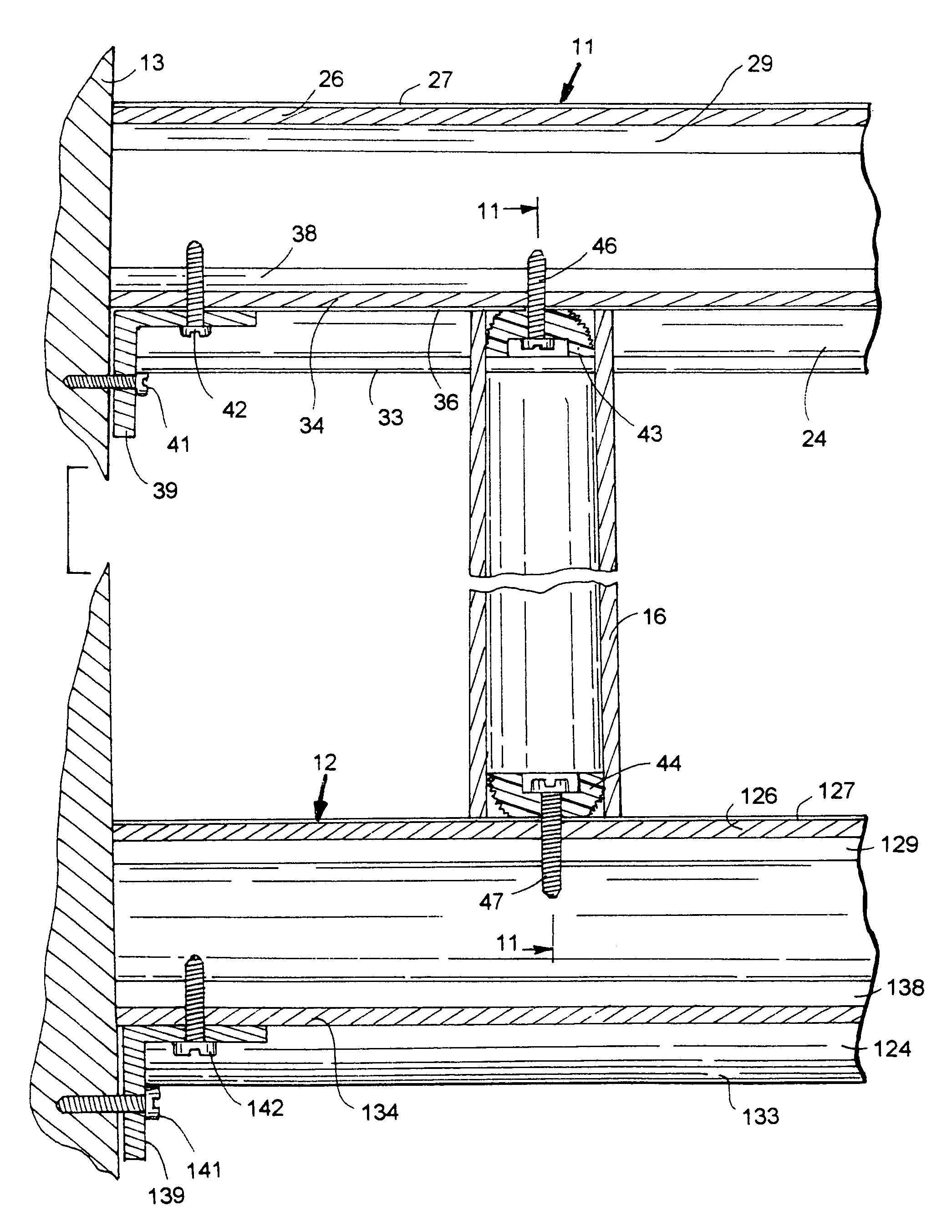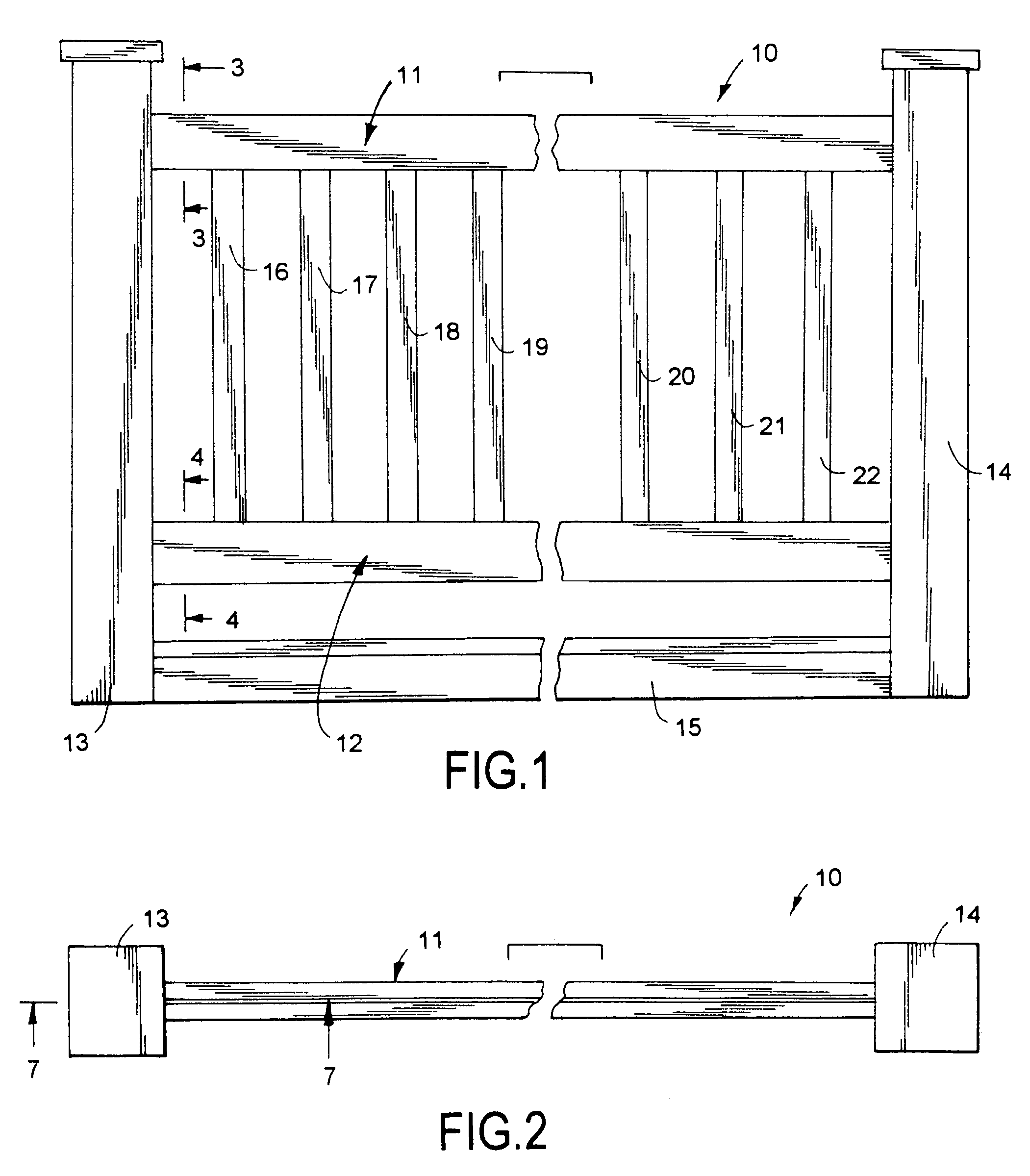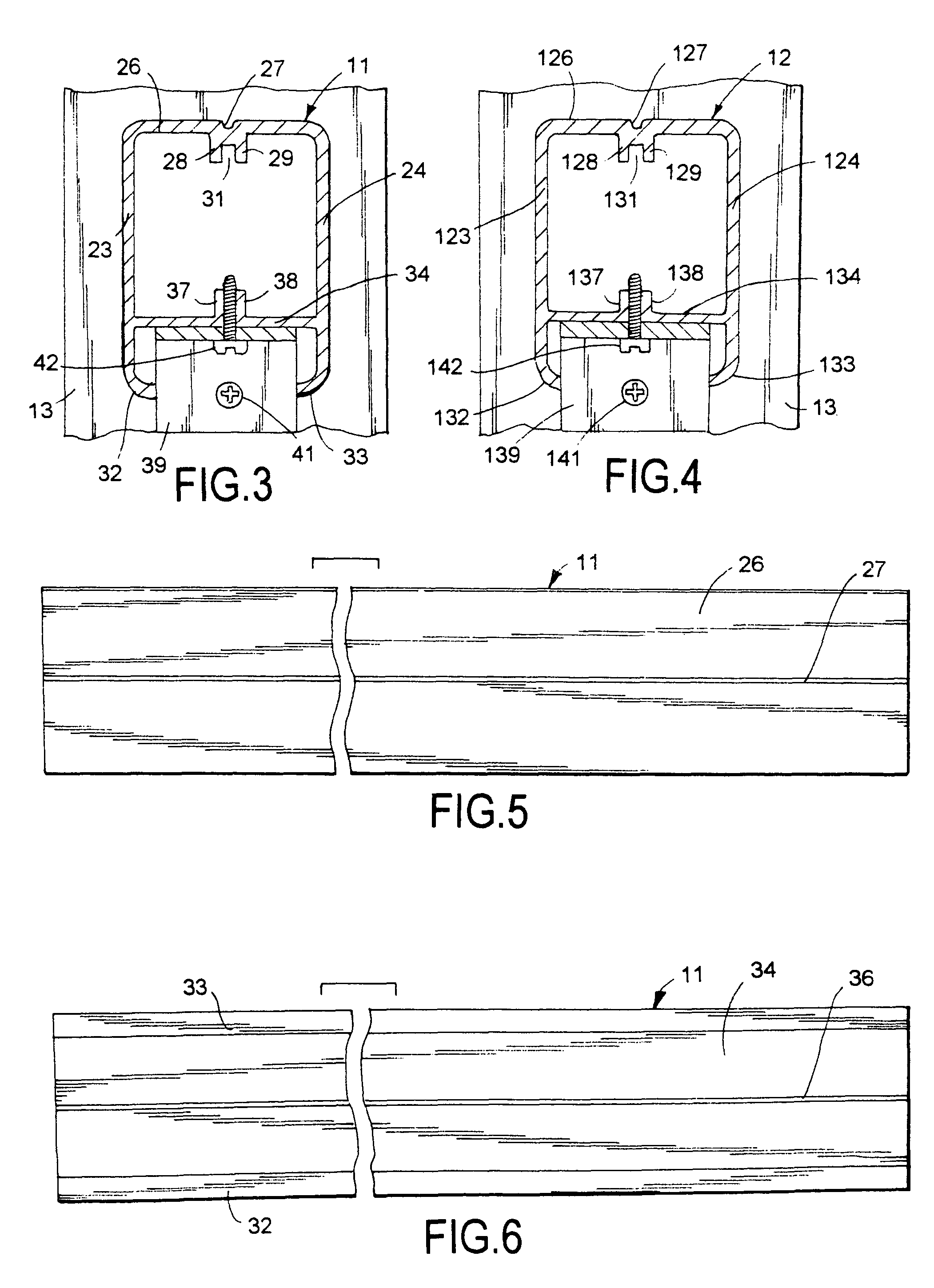Rail
a technology for railings and railings, applied in the field of rails, can solve the problems of saving time and labor in the construction of railings, and achieve the effect of reducing time and labor and reducing labor
- Summary
- Abstract
- Description
- Claims
- Application Information
AI Technical Summary
Benefits of technology
Problems solved by technology
Method used
Image
Examples
Embodiment Construction
[0029]Railing system 10, shown in FIGS. 1 and 2, has horizontal top and bottom rails 11 and 12 secured to upright columns or posts 13 and 14. Posts 13 and 14 are square wood members secured to separate sections of a deck or platform 15. Other shapes and materials, including metal, ceramic, concrete, composite materials and plastic, can be used for posts 13 and 14. The bottom ends of posts 13 and 14 can be anchored in the ground. A plurality of upright spindles 16 to 22 extend between rails 11 and 12. Spindles 16 to 22 are cylindrical tubes, such as aluminum tubes. Adjacent spindles are laterally spaced from each other a distance according to building codes. Opposite ends of each spindle are anchored to rails 11 and 12 to maintain uniform spacing between adjacent spindles. Railing system 10, shown in FIG. 1, is a section of a railing structure having top and bottom rails secured to posts 13 and 14 and additional posts. The upright spindles extend between and are anchored to the top a...
PUM
 Login to View More
Login to View More Abstract
Description
Claims
Application Information
 Login to View More
Login to View More - R&D
- Intellectual Property
- Life Sciences
- Materials
- Tech Scout
- Unparalleled Data Quality
- Higher Quality Content
- 60% Fewer Hallucinations
Browse by: Latest US Patents, China's latest patents, Technical Efficacy Thesaurus, Application Domain, Technology Topic, Popular Technical Reports.
© 2025 PatSnap. All rights reserved.Legal|Privacy policy|Modern Slavery Act Transparency Statement|Sitemap|About US| Contact US: help@patsnap.com



